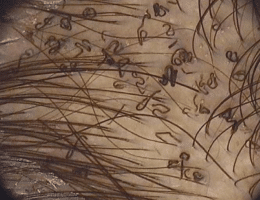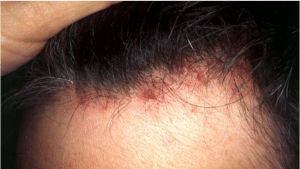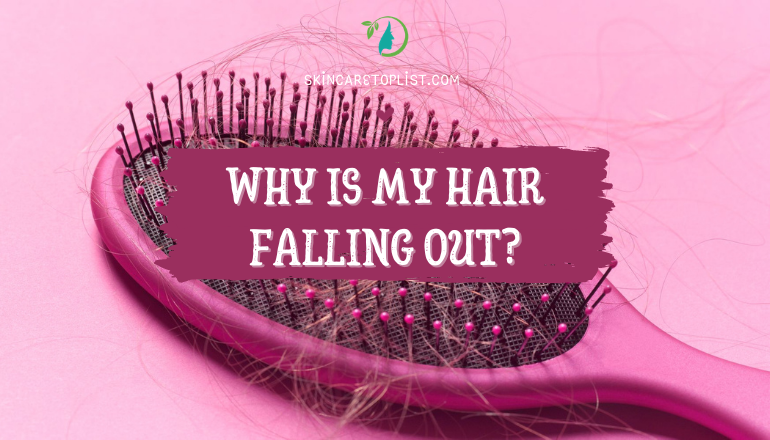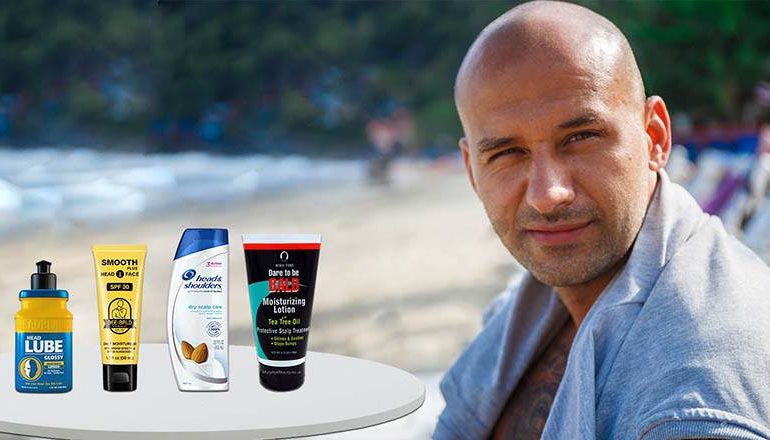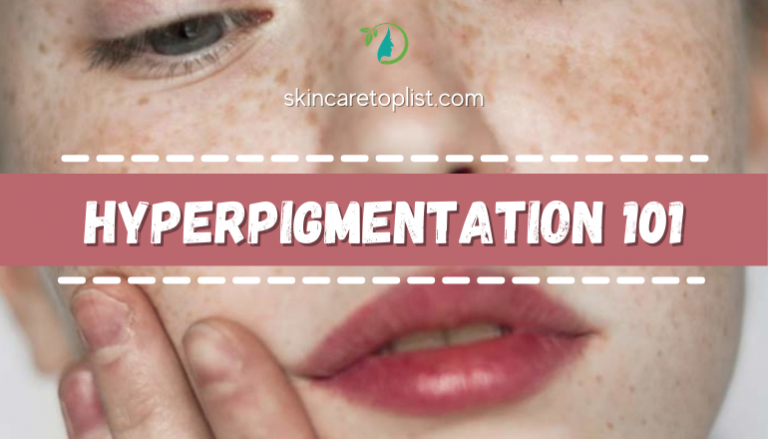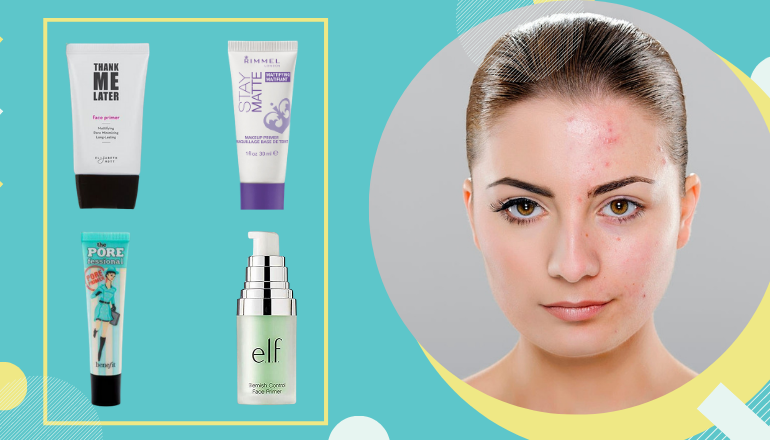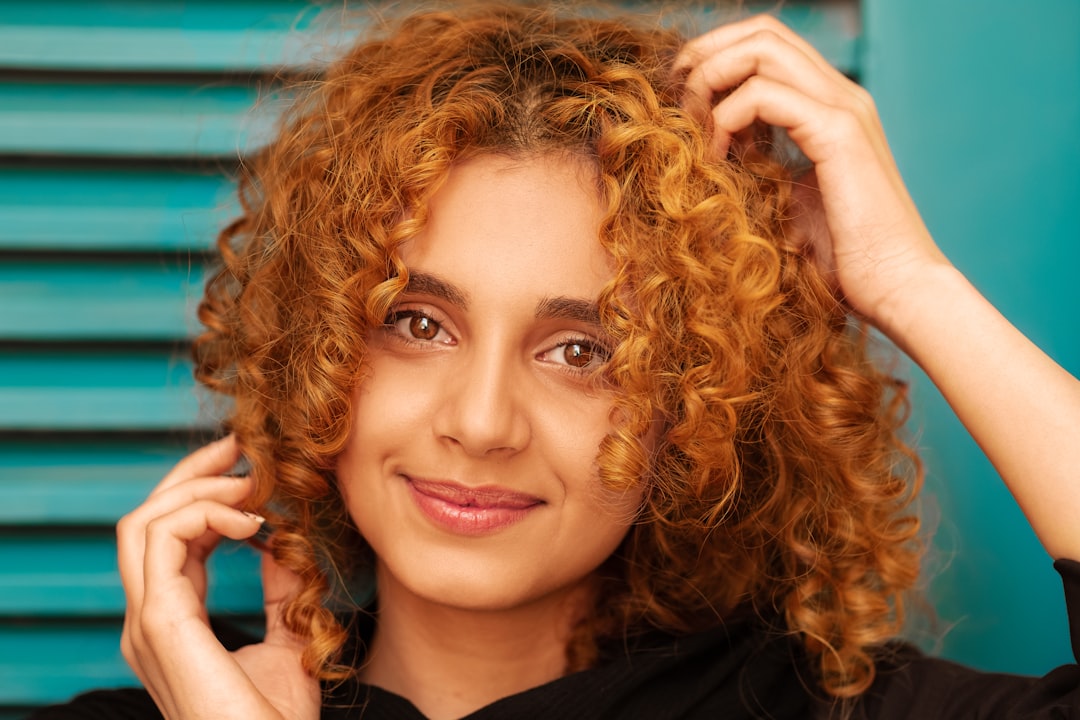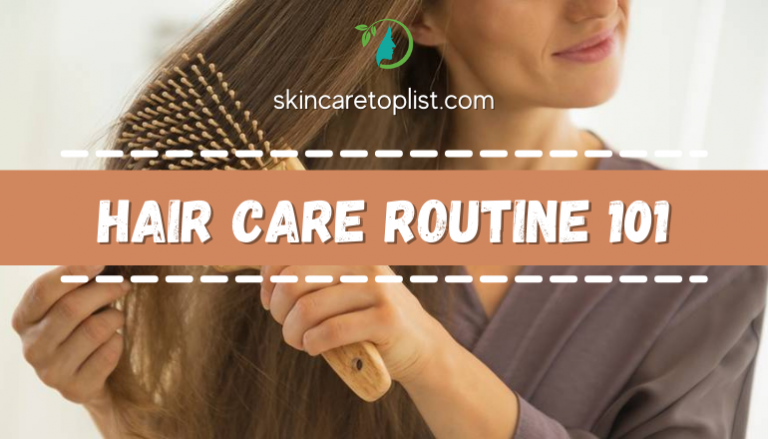
When I was a little girl, my natural hair was a dream of my elder sisters. They kept touching my hair and gave many compliments for its smoothness and sheen. After my first hair straightening, my hair looked nicer, but it became weaker as well. I did not care much about how weak it was since I only saw my dark brown straight hair.
Although my hair started falling out and my scalp became more obvious, I also did not ask myself why and kept using hot iron without heat protection spray to straighten it when it seemed weirdly wavy. My hair became drier and got frizzy more easily when I self-bleached my hair at home to get it ombre purple.
I thought it was cool, but at that time, my mom slightly rubbed my hair; it sounded really crunchy. She said what she can see from my hair is its dullness and fragility. From that moment, I believed that what I needed was to “feed” my thirsty, hungry hair. From a beginner, I learned how to love my hair by learning about building the proper hair care routine for good hair health. If you are struggling to find one for your hair, let’s grab a hot tea and follow me!
Understand your hair - Why does it become like that?
To understand how damaged your hair is, there are 3 levels for you to refer to. Let’s recall what you have done to your hair within a year and test how elasticity it is:
Level 1:
Hair loses shine, becomes dry and frizzy, and can obviously feel its dryness when you touch and lift your hair backward.
Hair detangling at this level is quite difficult because the hair gets tangled quickly, making it difficult to comb or brush hair.
When a hair strand is pulled, it still returns to its original length and shape, which means it still has a certain elasticity.
The process of changing hairstyles with hair about 1-2 times in a year with hairdressing methods such as curling, dyeing, straightening.
Level 2:
Hair loses its shine, and the dryness is totally noticeable when you grab your hair.
Hair is weak, prone to breakage when combing or washing hair, or strongly exposed to outside activities.
When a hair strand is curled, it takes longer to bounce back, and when it is pulled, the strand breaks much more quickly.
The process of changing hairstyles is about 3-4 times within a year with dyeing, straightening, and straightening methods.
Level 3:
Hair is dry, porous, and easy to absorb water. You can feel that it is heavy when washing hair.
Hair loss and tangles frequently occur uncontrollably.
There are many burnt hairs, split ends, or split hair shafts.
Frequency of changing hairstyle and beauty more than 4 times a year and having hair bleaching.
Hair care routine for different types of hair
Many people think that those who have pretty shiny hair have spent money on hair salons and expensive hair care products. However, you are the true hair care guru for your hair since only you understand it the most. You cannot nourish the dry scalp greasy hair to the shiny, strong one if you do not know how to use hair care products properly. Even expensive ones hold the white flag in this case. A good hair care routine with good products does save your time and effort in the journey of getting the desired hair look.
For beginners, it might be challenging to know where to start building a natural hair routine. It is harder for those whose hair has been dyed, bleached, or already styled with chemicals. At first, you should not worry much since you have me here to share real experiences with you. You should bear in mind the most important thing that a hair care routine is not only choosing a good shampoo for hair. The primary purpose of how to take care of hair is to make it become the healthiest, strongest, and shiniest hair. That is why we need more than shampoo. However, as I told you, we will not break a bank just to nourish your hair. Let's get started on how to create your own care hair routine.
Step 1: What is your hair type?
Do you actually know what it is? Hair type is not only texture, but it is also about hair's moisture absorption, elasticity, density, etc. I have a test for you on four categories to determine what type of hair it is.
Diameter - How broad is your hair strand?
This is one of the first means to define your hair type. It is not about how thick your hair is or how many hair strands are on your scalp. It is about the broadness and width of each individual hair strand.
Of course, I will not ask you to take a ruler and measure a hair strand's diameter since we seem to have a magnifying glass. Don't worry; your fingertips can do this job well. When you place a hair strand on a desk, it has a thin width if your fingertips rub it, and you feel nothing.
If you can feel its texture and thickness, your hair is rough and probably on the coarser side. If your hair is something in between, it seems to have moderate width.
But, why do we have to define its diameter? Is there any significant benefit to knowing that? Yes, it is. It tells you what kinds of products for your natural hair regimen you need to look at on the store's shelves.
If you have coarser hair strands, it takes longer to dry, but it can’t retain well compared to others. Thus, it is prone to breakage and frizziness. What we need to feed those hair strands is hair moisturizer to keep them hydrated and stronger.
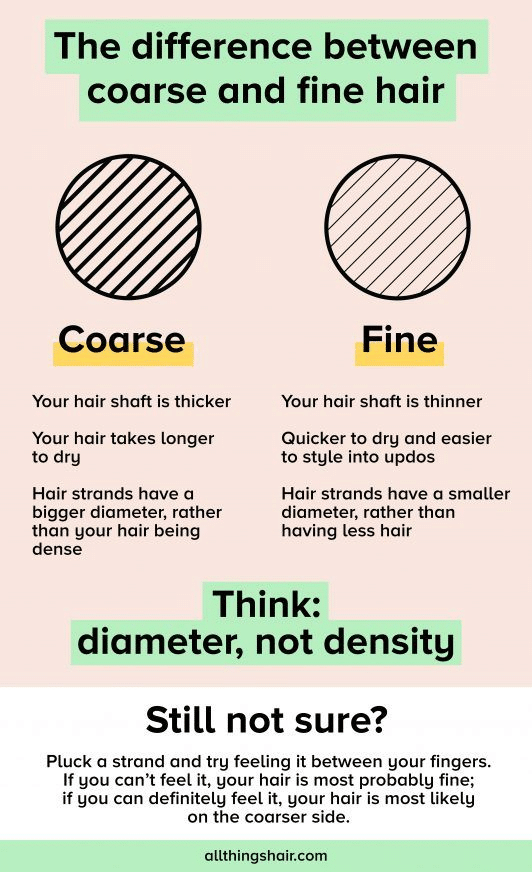
Density - How thick is your hair?
The second way to define your hair type is its density. This factor refers to how many hair strands are on your scalp. Again, I will never ask you to count one by one. To figure out your hair's density, you hold a part of your front hair and flip it aside.
If you can see your scalp, obviously, your hair is thin. Besides, if you only see a very thin line of your scalp, congratulations, you have really thick hair.
So, a big question here is whether hair's diameter determines hair's density? Is it that you have thick hair because you have coarser strands? I believe that many think the answer is yes, but it is a no. I have coarse strands, and if you hold my full ponytail, you can wow because of its thickness.
However, my hair is thin since my scalp is exposed quite noticeably if I sweep my hair band aside. Some of my friends have very fine hair, but it seems that there is no place for the scalp to show off. Thus, diameter and density do not go hand in hand.
How to take care of hair when knowing your hair’s density? What you learn from that is how to get the right products for hair style. If you have thin hair and your scalp is shown awkwardly, you should not get products that weigh your hair down like oils or conditioners. Plus, you should go for volumizing shampoos, dry shampoos, or hair spray to create a volume for your hair.
For those whose hair density is thick, to style your hair, you need to use heavy products to keep your style long-lasting and under control. Thus, those heavy styling products might cause dry scalp greasy hair. If you want to keep your thick hair neat or good-looking without any styling products, layering to make it thinner is the best solution. Thus, please avoid blunt cuts since it makes your thick hair weirdly bulky.
Elasticity - Can your hair strand “survive” after being stretched?
I believe this is the easiest factor for all of us to understand. Hair's elasticity is the ability of hair to return to its original length and shape after being stretched.
As we know, hair is made up of 95 percent of protein aka keratin, which is a factor to maintain the hair's elasticity, provide structure and make it strong and healthy.
When hair strands lack protein, they can be prone to breakage and frizziness. To measure how elastic your hair is, let's do the text together:
- Take a hair strand and wash it with dish soap.
- Use your thumb and index finger from both hands to hold it and make a distance of 4 cm.
- Pull it apart and wait for it to bounce back
If it is stretched fore 1 more cm and return to its original length, you have healthy hair
If it is hardly stretched and easily broken, your hair lacks moisture
If it does not return to its original length, your hair lacks protein.
What should we do when hair is with low, high, or normal elasticity?
When your hair is low in elasticity, it means it contains much protein and less moisture, which makes a straw-like feeling when your fingers go through your hair. The solution is to use water-based hair products, deep or leave-in conditioner to restore the normal level of moisture for hair.
If your hair is too high in elasticity, it is easily stretched and unable to bounce back. Simply said, your hair has more moisture and less protein than it should. Normally, hair with high elasticity looks lifeless and fluffy. It is time to nourish your hair with protein-rich hair products to make it lively again.
And, if your hair is well-balanced between moisture and protein, it is great that it has normal elasticity. You better retain your good hair care routine and change more suitable hair products when you find it has less moisture or less protein to maintain a good balance.
Porosity - Can your hair strand sit on the top of water?
If the answer is yes, you should be aware of your hair’s porosity. Simply, refers to how your hair absorbs moisture or hair products. The reason you need to understand your hair's porosity is to choose suitable chemical treatments that your hair can cope with.
To test how porous your hair is, you can put a hair strand in a cup of water. If it sinks, it has high porosity as it absorbs much water. Conversely, if it floats on top of the water, it means your hair has low porosity. And, if it does sink to the bottom of the cup and sit on the top of the water, your hair's porosity is well-balanced.
What should we do when we have high, low, or normal porosity of hair? For low porosity, it signifies that it takes a longer time for hair to dry out since water often sits on the surface of the hair and cannot be absorbed.
Thus, hair products tend to accumulate residue on the hair strands instead of nourishing them inside. That is the answer to the question “Why do I get dandruff?”. The best way to use hair products is to spread them evenly and thoroughly when hair is moist.
If your hair is too porous, it probably has gone through chemical hair treatments or heat styling too often. In this condition, its strands have cracks on the outer part of the hair shaft; they soak up hair product, and you always need to apply more to spread out it evenly.
Hair with high porosity dries out promptly without a feeling of being nourished or hydrated. For this hair type, finding a good hair moisturizing cream and avoiding heat tools are the best ways to maintain a certain level of porosity.
Step 2: Define your must-have hair care products
Hair types are like skin types; different skin types need different types of primer, foundation, and skincare routine. Thus, different hair types should be nourished by different hair care products. However, there are some sorts of must-haves that should be in your hair care routine. What are they? Here we go:
Shampoo and conditioner
Do you know why we need to make our hair wet before using shampoo and conditioner? It is not only because it looks better in the shower, but it also makes you use less shampoo to wash your hair.
When your hair is wet beforehand, the product can be lathered and spread out more evenly. It is important to choose the right shampoo and conditioner for your type of hair to start a proper natural hair care regimen regardless of the styles you make for your hair.
If you choose the wrong ones, not only scalp irritation but also other aftermaths will be shown in the following part. Here are some tips for you to choose the right shampoo and conditioner for some common hair type/condition:
Hair type/condition | Shampoo | Conditioner |
|---|---|---|
Fine hair | It should contain panthenol which is an ingredient promoting hair’s softness and strength, retaining moisture and advanced polymer to increase volume. Besides, the additional extract will support in enhancing hair strand’s health:
Golden root: an extract to retain moisture and fight back breakage | You better avoid heavy conditioners since it weighs hair down, makes greasy look for hair if you do not wash it out properly. Conditioner should have lightweight formulas and contain some natural extracts such as:
|
Curly/wavy/thick hair Coarse/ unruly hair | The main aim when choosing shampoos for these hair types is to make hair strands manageable and frizz-free. You do not need to wash your hair daily (it can be 3-4 times a week), but the product you choose should be sulfate-free to retain and restore your hair’s natural moisture. It shall be a great option for those who have a keratin treatment. Sulfate-free shampoo is commonly famous for enhancing curl’s volume, making hair shinier without promoting grease production. One more tip is to look for shampoos labeled “anti-frizz” or “frizz-free” as those products are specially formulated to solve as well as prevent this hair problem. There are 2 types of anti-frizz formulated shampoo: silicone and non-silicone. To avoid buildups and scalp irritation, you should give it a go for a silicone-free one. | Leave-in conditioner is more common to those with these hair types as you can use it daily. You can use it after washing your hair with shampoo or just making it damp with lukewarm water. It helps to detangle stubborn hair strands, give sheen and protect your curls as a shield from external factors such as pollution, heat from sunlight, or dirt from the living environment. Leave-in conditioner should contain some ingredients below to enhance hair’s good looking:
|
Dry scalp/ Dandruff | Dry scalp often comes together with dandruff. How to cure a dry scalp? First, you should switch your shampoo to another one that contains coconut oil, tea tree, salicylic acid, or apple cider vinegar since those ingredients are great at soothing irritation and itchy scalp. Plus, they can restore sufficient oil to nourish the dry scalp to reduce flaky and dandruff. | You can use a conditioner every day when you have a dry scalp. It is also a good way to remove dandruff effectively. You should look for products that contain selenium sulfide or zinc pyrithione. Those two ingredients are chemical agents that can answer how to fix a dry scalp and reduce dandruff. |
Microfiber towel
Why don't we use cotton towels to soak up water from hair but microfibre ones? It is because it is 100 times finer than our hair strands, which absorbs water dramatically, requiring less hair tugging and pulling.
Thus, your hair strands can be protected from being damaged by high friction. Plus, compared to cotton, microfibre lasts longer with maximum washes of 500, so I can say it has better value for money.
Besides, other stuff that must be in our hair care routine are:
A hair dryer that has variable heat settings
A diffuser for curly/thick hair
Heat protectant cream or spray
Styling product (spray, gel, mousse, etc.)
Brushes/combs: You need different brushes/combs when your hair is wet and dry. I bet most of you think we just need a paddle brush to detangle, create volume, etc. everything. I will prove that you are wrong to just only use one brush/comb in the following part.
Step 3: When should you wash your hair?
Is it that you usually wash your hair at the end of the day after work? And, even if you are in quarantine time and do nothing to get sweat, will you wash your hair once or twice a day? To help you be less confused about whether you should wash your hair or not, here are 3 factors to determine how many times and when you should wash your hair in a natural hair routine.
Oil production on the scalp
It is not uncommon to find out many girls still wash their hair every day as they can feel grease leaking from their scalps. But oil is not the only factor that determines how often you should wash your hair.
Scalps of different people of different ages will secrete different amounts of sebum to maintain the normal level of natural oil for natural hair’s moisture. People whose scalp can produce natural oil for hair to wash daily are not the majority.
If you overwash or use shampoo improperly, it will strip down the essential amount of oil to keep hair’s moisture, which causes dry scalp greasy hair, breakage, and frizziness.
Type of hair
The straight and thin hair needs to be washed more frequently since it is easily coated by oils. Thus, the hair looks dirtier, greasier, and duller as there is no volume when it is weighed down due to natural oil.
On the other hand, oil is a charm for curly/wavy hair since it gives a sheen and a healthier look for this type of hair. A certain amount of oil is also great to maintain the essential level of moisture for curls and prevent frizziness. Thus, those with curly/wavy hair do not need to wash their hair more than once a week or every other week in their natural hair care regimen.
Frequency of styling with hair products
The most common hair product for styling is hairspray which always creates build-ups and flaky residues for hair. If you do not wash your hair after styling, sweat and those styling products can be easily absorbed into the scalp and cause irritation.
Some people will ask whether we need to wash our hair in the morning or at night. The answer depends on those factors I mentioned above. If you have curly hair, but you use hairspray for a date, of course, you still need to wash your hair regardless of the result of the date.
Step 4: How to style your hair?
Normally, when we style our hair, we often seek hot tools to wish it to last longer with a natural-looking finish. However, many girls still forget to use heat protection beforehand in their hair care routine. The heat from hot tools causes the hair shafts to be split and dryer since it is burnt.
That is why you feel your hair rougher when you run your fingers through it. To avoid this situation, please bear in mind that heat protectant spray or cream is your hair savior when you are indeed hair styling. Its benefit is to coat over your hair strands as a shield to lock all moisture and protect them from heat damage.
Actually, there are many other ways to style your hair without using hot tools, especially when you need to curl your hair. You can make braids for your hair and get a healthy wavy look after a night.
You also can use your long, clean socks and wrap your hair around them. Those new ways definitely need your passion, but it requires no heating tools at all.
Step 5: Additional options for hair care routine
The most common hair product that can be considered to replace shampoo when you have a bad hair day, but your meeting is just in 5 more minutes is dry shampoo. It commonly contains alcohol or starch-based ingredients to absorb all excess grease that makes your hair dull.
For beginners, you should directly apply to your scalp, give it a minute to soak up oil, and brush the excessive product out. Brushing out is the step that many people will forget to do, but it is important because oil after being soaked up becomes tiny particles. If you do not remove them physically, it will not leave less greasy hair as a finish but build-ups.
Another hair care product option that you can add to your natural hair routine is a hair mask. Same as face masks, this product is to boost hair moisture besides using hair conditioners.
You can use it during winter when your hair is drier than normal days. There are many DIY hair masks that have ingredients like bananas, avocadoes, honey, eggs, etc. If you have never tried a hair mask before, you would regret not using it sooner since it is the best dry scalp remedy.
It technically not only reduces hair frizziness and maintains moisture, but it is also a great time to let your scalp relax and release all dirt stuck into it.
6 mistakes make your hair fall out quickly - How to take care of your hair properly?
Tie your hair too tightly
To understand how tightly you tie your hair, let it untie and see how many hair strands stuck in your hair tie. It happens in both men and women. Plus, in hot seasons, girls tend to tie their hair higher to avoid sweating.
However, this action creates a huge pressure on your hair roots, which ends the life of some hair strands faster.
Plus, hair tying needs a proper technique as well. You can imagine that if you break a chopstick, it would be easy. It would be more difficult when you try to break a bunch of chopsticks.
If you tie your hair with uneven force to your hair strands, it results in breakage and frizziness when you untie your hair.
Dye or style hair too much
I believe that each of us has at least one or two times to dye or style our hair with hot tools. After that, your hair tends to be drier and easily falls out. It is because the heat from styling tools creates pressure on hair roots and weakens hair follicles.
Besides, during the hair styling process, your hair will be applied some chemicals to add colors or to make curls. Your scalp can absorb those chemicals and makes your hair roots weak as well.
That is why, after a change in hairstyle, you are advised to spend more time in your hair care routine with more specific products for hair to nourish and repair the damage from hot tools. 6 or 8 weeks is a recommended time to re-dye your hair and 2 to 3 years to re-curl it. Let's choose the best hairstyle for your hair and give it some rest before heading for a new style.
Stress and depression
Do you know the main cause of alopecia areata? It is due to stress and depression. When you are stressed or in depression, adrenaline is produced. This hormone is associated with hair loss since it triggers hair follicles to the telogen phase (the last phase of the hair growth cycle), which means you are going to end those hair strands’ life faster.
Especially, when hair loss happens, you tend to be more stressed since you do not know how to deal with this problem. Consequently, it becomes a habit that makes your hair follicle more sensitive to stress and easily falls out. If you realize that there are many hair strands on your floor, do not panic! Trying to live happier and more optimistic about everything you encounter in your daily life is how to take care of your hair and mind.
Choose the wrong shampoo
I believe that some girls are too lazy to change to a new shampoo even though it makes their hair dry or dull. It is a totally bad habit for “Why do I get dandruff?”. In the market, there are many shampoo brands that specifically deal with a type of hair problem.
If you have dandruff, there would be nothing to change if you use shampoo for shiny hair in your hair care routine. Some people even use body wash to wash their hair as well. They insist that their hair is strong enough, and their scalp is not itchy or dry as well. It is not how to take care of your hair, seriously.
The scalp has more sebaceous glands; it is the dirtiest skin compared to others on the human body. It has a low skin function due to higher transepidermal water loss which means it is weak at keeping chemicals and irritants out. Since the scalp is “fragile”, it also needs proper care, same as facial skin or body skincare.
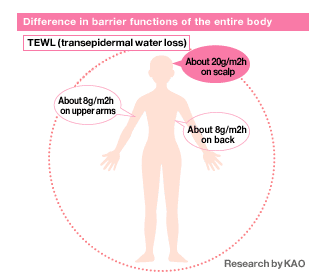
Wash your hair with extremely hot water
Have you ever felt better to wash your hair with hot water because it is more comfortable? I think everyone washes their hair with hot water. It is a common mistake in a natural hair care regimen. As mentioned above, the scalp is quite tender.
Have you ever wondered how the scalp would be if it was washed with hot water? Hot water will strip out the moisture from your scalp, which makes it dry and hair strands more brittle and prone to breakage.
That is why after washing hair with hot water, you can find many hair strands stuck between your fingers when you stroke it. Thus, the best advice for dry scalp remedy is to wash your hair with lukewarm water.
Severe diet
When I was on an extremely strict diet before my wedding ceremony, I thought I would look great on my big day with a slim waist. I ate less fruit since I believed natural sugar would make me fat, I slept more to avoid hunger, and I workout more than 2 hours a day. The result was bad; my hair was thinner and lost shine. The deficiency in vitamins is the main
6 tips for a healthier hair care routine
Scalp massage
We often go for body, shoulder, and neck or foot massages. And after each massage session, feeling relaxed and healthier is what we receive. If our scalp has a massage, it will have the same, too.
When you massage your scalp frequently, it helps in blood circulation. Thus, it enhances the blood supply and nutrients to hair strands and increases brain circulation in order to release stress.
When stress is reduced, hair can grow faster and fall out less. To have the best scalp massage, there are some rules to take note of:
Scalp massage is not hair-root massage. The most common mistake when doing scalp massage is to rub hair roots and make your hair mess up. It results in pressure onto your hair roots, which makes your hair fall out more.
The correct action for scalp massage is to use fingertips with both hands, apply medium pressure, and make small circles.
You can add your favorite essential oils such as lavender or peppermint to both enhance relaxation and promote hair growth.
Hair drying
If you often dry your hair fast with a high-temperature hair dryer for the sake of dry hair, what do you feel after that? Is it a feeling of damaged hair? In your hair care routine, if you use a hair dryer to blow the hair roots, high temperature tends to weaken hair strands, which results in frizziness and falling out.
That is why before using hair dryers or any heat tools to hair, we need to apply for heat protection. Here are some tips to blow dry your hair properly:
Short hair
Divide your hair into small sections or how your hair is styled.
Lift up each section by a comb to create some volume and dry it till dry.
Medium and long hair
Detangle your wet hair with a wide-tooth comb and divide it into small sections
Hold your hairdryer straight and blow from the top of your head to avoid getting hair frizzed.
For your hairband, you should lift it up to create volume.
Notes: Please always test the heat to avoid burning your hair and make sure to stop drying when your hair is not fully dry but damp.
No brushing hair when it is wet
Why? When you brush your wet hair, it creates huge friction to your hair roots, which also causes hair to fall out faster. You should use a cotton towel to soak up water from your wet hair first and use a wide-tooth comb to detangle your hair.
In that way, it reduces friction to your hair roots as well as an act of pulling your hair when we try to detangle out wet hair.
Prepare more than a type of hairbrush
Why do we need more than a brush or comb for our hair? If you are a simple girl that keeps only one hairstyle and hair length, you also need at least two brushes for your hair when it is wet and dry.
I found out that many of my female friends do not know which hair brushes do what, which hair brushes are best for their hair type and which hair brushes are best for their desired styles. I bet you might be the same. Using different hair brushes for different needs is important to maintain hair health. Here are some brushes and combs that you should have in your natural hair routine:
Type of brush/comb | Benefits |
|---|---|
Rat-tail comb 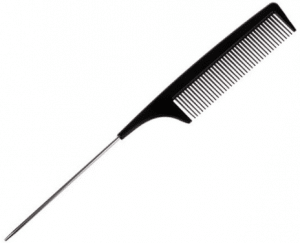 |
Good for: every hair type and style. |
Regular comb  |
Good for: straight and wavy hair |
Wet hair brush/Detangling brush 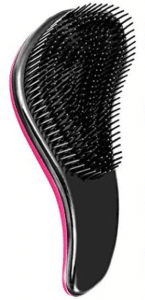 |
Good for: thick, curly and textured hair |
Paddle brush 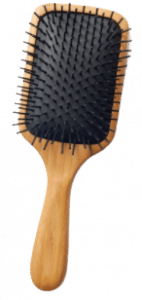 |
Good for: thick, long hair |
Vented brush  |
Good for: straight, long, or shoulder-length hair |
Round Brush 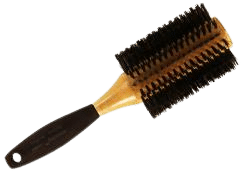 | There are many types of round brushes that you can find in any beauty store, but this type of hairbrush generally is made to create volume and a c-shaped curve for hair.
|
Using hair conditioner
This product should always be in your natural hair care regimen to provide moisture for the hair cuticle. Hair, fingernails, and skin are the same because they all have keratin. If you often use body and nail creams to make them softer and stronger, you should also apply hair conditioner to your hair more frequently as well.
The benefit of using a hair conditioner is not only providing moisture but also reduces friction when you brush your hair, which promotes healthy hair growth. If you have had a hair conditioner, you better get one for the sake of daily painless hair brushing. How to take care of your hair with a hair conditioner? Unlike shampoo, you can use hair conditioner daily. If your hair is fine, the recommendation is 3-4 times a week.
Healthy diet
If you already do all the tips I mentioned above, a healthy diet will be a plus for your natural hair care regimen. So, what is a diet for promoting hair’s softness, strength, and health? It should include vitamin A, C, D, B7 (biotin), protein, and fatty acids. They are in some foods such as:
Vitamin | Benefits | Foods | Hair sickness resulted from the vitamin deficiency |
|---|---|---|---|
Vitamin A | Spinach, sweet potatoes, carrots, kales, yogurt | Hair loss and breakage | |
Vitamin C | Berries, avocado, strawberries, sweet peppers |
| |
Vitamin D | Salmon, mushrooms, egg yolk, fortified milk | 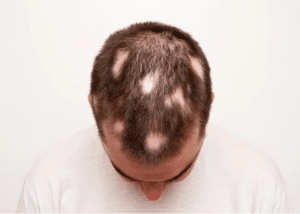 | |
Vitamin B7 (Biotin) | Fish, meat, whole grains, nuts, vegetables | Hair loss (but it is rare as vitamin B7 is contained in a lot of natural foods) | |
Vitamin E | Avocados, peanut butter, fish, sunflower seeds, almonds, pumpkins | Thin, dull hair with dry scalp | |
Zinc | Legumes, meat, shellfish, eggs, dairy | Hair loss |
If you have a hectic working life, taking supplements is a great idea for your hair care routine to protect and nourish your hair as well. In any drugstore, it is easy to find OTC supplements for hair with clear ingredients.
However, you should have a doctor consultation to have a suitable treatment if your hair has symptoms of alopecia areata, red hair follicles, or itchy dry scalp with severe dandruff.
The Bottom Line
In conclusion, to build a hair care routine for beginners is not too difficult to go through any hair test to define your hair type or the hair condition it is at that time. However, it is quite important since by understanding your hair, what your type is, you can determine what sorts of hair products you should go for.
Different hair types and conditions definitely need different natural hair care regimens. It is not for the sake of building a method to promote hair length or sheen, but it is a way to fix the current hair problems.
Besides, to nourish good healthy hair, when building a hair care routine, we need to learn the right and wrong methods when taking care of your hair. There are some bad hair care habits that have been accumulated over the years; however, it is hard to realize.
Thus, I hope this article would be helpful for you when you are in the process of building a hair care routine to restore its healthy look. I also understand that it might take more time to accomplish a perfect routine, but please be patient as that is what your hair needs from you.
If you have any ideas or tips to build a hair care routine for beginners and for whatever hair type that you have tried and succeeded in, please share in the comment box below. I believe that not only me but many girls feel grateful for that.

